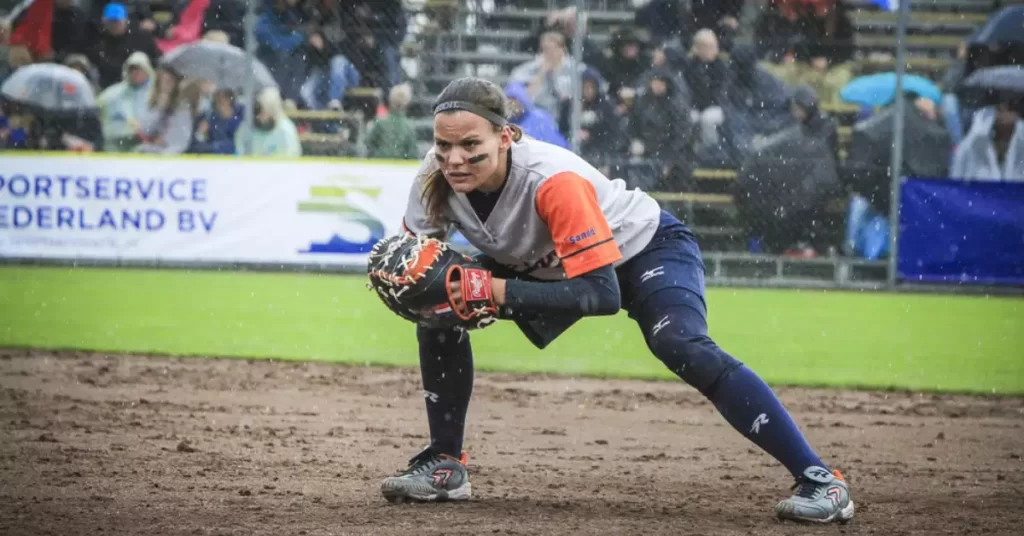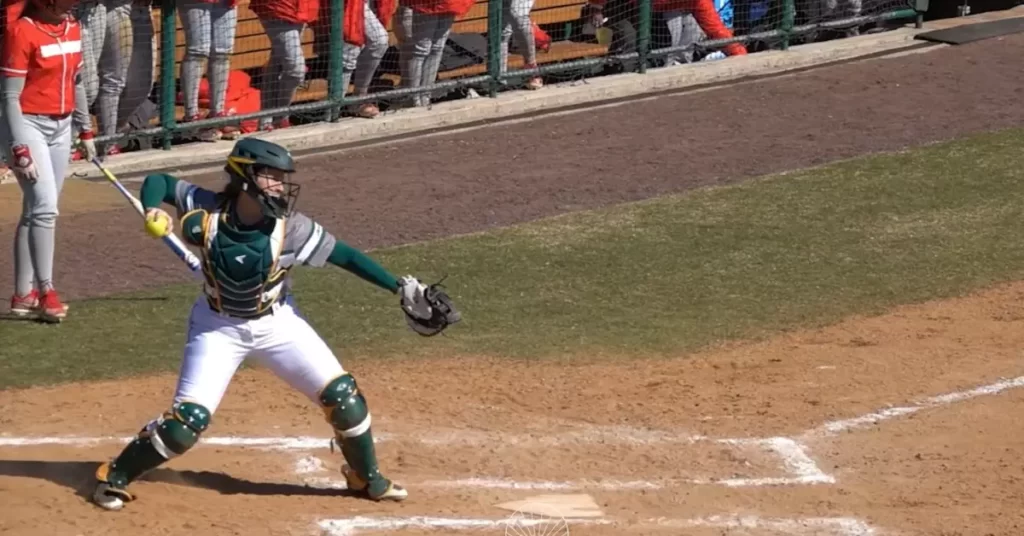Softball, a popular sport worldwide, boasts a unique blend of athleticism and strategy. Teams engage in intense battles, where every position plays a crucial role. To appreciate the game’s intricacies, understanding each position becomes essential.
Softball consists of nine fielding positions, with players assigned to specific roles to maximize their team’s potential. Pitcher, catcher, first baseman, second baseman, third baseman, shortstop, and three outfielders make up the standard lineup in a softball game.
Dive into the depths of this blog post, where we’ll explore each position’s responsibilities and skills required. Unveil the fascinating world of softball, and learn how teamwork can lead to triumph on the field.
Overview of Softball Positions
There are a total of nine positions in softball, divided into three categories: infield positions, outfield positions, and pitcher and catcher.
Infield Positions
- First Baseman
- Second Baseman
- Third Baseman
- Shortstop
Outfield Positions
- Left Fielder
- Center Fielder
- Right Fielder
Pitcher and Catcher
- Pitcher
- Catcher

Infield Positions Explained
First Baseman
The first baseman is responsible for fielding ground balls, catching throws from other fielders, and covering first base. They must have quick reflexes, excellent hand-eye coordination, and be able to stretch to catch off-target throws.
Second Baseman
The second baseman plays between first and second base. They are responsible for fielding ground balls, turning double plays, and covering second base. A good second baseman should have quick footwork, solid range, and strong throwing skills.
Third Baseman
The third baseman is positioned near third base and is responsible for fielding batted balls, catching line drives, and covering third base. They require strong arm strength, fast reflexes, and solid defensive instincts.
Shortstop
The shortstop is positioned between second and third base. They are the primary playmaker in the infield, responsible for fielding ground balls, turning double plays, and covering second base. They must possess exceptional range, quickness, and strong throwing ability.
Outfield Positions Explained
Left Fielder
The left fielder is positioned in the left portion of the outfield. They are responsible for fielding fly balls, ground balls, and line drives hit to left field. They must have good speed, strong arm strength, and the ability to read the ball’s trajectory.
Center Fielder
The center fielder is positioned in the middle of the outfield. They cover the largest area and must have excellent speed, range, and arm strength. They are responsible for fielding balls hit to center field and backing up both the left and right fielders.
Right Fielder
The right fielder is positioned in the right portion of the outfield. They are responsible for fielding balls hit to right field and must have strong arm strength to make long throws to the infield.
Pitcher and Catcher Explained
Pitcher
The pitcher is the most critical position in softball, as they initiate every play by delivering the ball to the batter. They must have excellent control, accuracy, and a variety of pitches to keep hitters off balance.
Additionally, they are responsible for fielding balls hit back towards the mound and covering first base on certain plays.
Catcher
The catcher plays behind home plate and is responsible for receiving pitches from the pitcher. They also play a crucial role in preventing stolen bases by throwing out base runners attempting to steal.
Catchers must have strong arm strength, quick reflexes, and the ability to block errant pitches. Furthermore, they work closely with the pitcher to develop game strategies and call pitches.

How Positioning Changes Based on the Situation
Softball positioning can change based on various factors, such as the number of outs, the location of runners on base, and the batter’s hitting tendencies.
Fielders may adjust their positioning to cover potential bunt attempts, play deeper for power hitters, or shift to cover gaps in the field. Understanding these situational adjustments is crucial for a team’s defensive success.
Strategy and Importance of Positioning in Softball
Positioning in softball is a critical aspect of the game, as it ensures that fielders are in the best possible location to make plays on batted balls. Proper positioning can prevent extra base hits, limit scoring opportunities for the opposing team, and lead to more efficient defensive play.
Coaches and players must work together to develop effective defensive strategies based on the strengths and weaknesses of their team and the opposition.
Tips for Choosing the Right Position for a Player
Selecting the right position for a player depends on their skillset, physical attributes, and understanding of the game. Here are some tips to consider when choosing a position for a player:
- Assess the player’s strengths and weaknesses.
- Consider the player’s arm strength and throwing ability.
- Evaluate the player’s speed and range in the field.
- Examine the player’s instincts and ability to read the ball.
- Determine the player’s level of experience and understanding of the game.
Frequently Asked Questions (FAQs)
What is the most important position in softball?
While every position is essential, the pitcher is often considered the most critical position in softball due to their role in initiating every play and keeping hitters off balance.
Can a player change positions during a game?
Yes, players can change positions during a game, but there are substitution rules that must be followed. Coaches must strategically make these changes based on their team’s needs and the game situation.
How can a player improve their defensive skills?
A player can improve their defensive skills through regular practice, focusing on fundamental techniques, and learning from experienced coaches and teammates. Drills that emphasize footwork, throwing, and fielding can also help players hone their skills.
Conclusion
To sum up, every softball position plays a vital part in a team’s success. Each player brings their unique skills and abilities to form a cohesive unit, striving for victory. Mastering these positions and their respective duties is essential for both individual growth and team performance.
Now that you’ve gained insight into the various positions in softball, you can better appreciate the sport’s complexity and strategy. Armed with this knowledge, fans and players alike can enhance their understanding of the game and foster a deeper love for this exciting and competitive sport.
